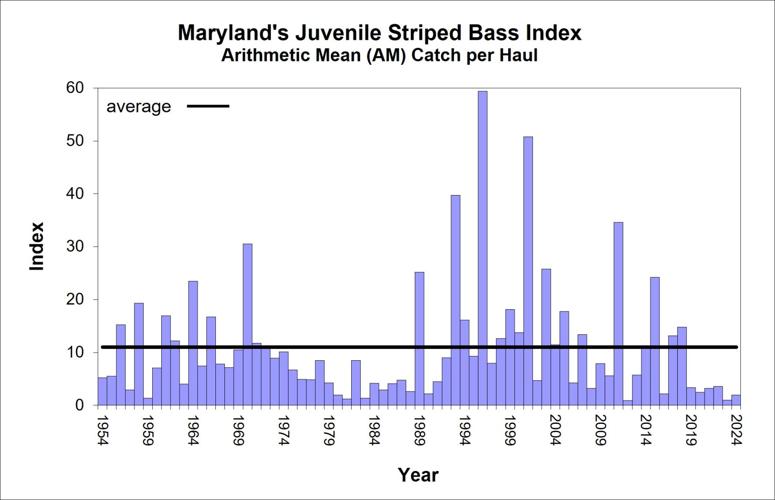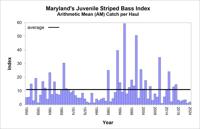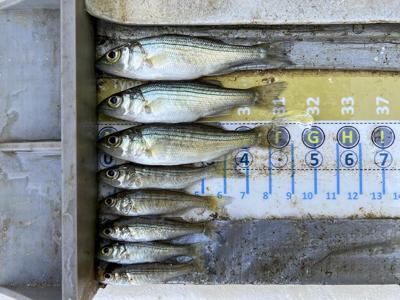CHESAPEAKE BAY, MD - For another consecutive year, striped bass, or rockfish, in the Chesapeake Bay are showing poor reproduction rates according to studies in Maryland and Virginia.
The Maryland Department of Natural Resources (DNR) has announced the results of 2024’s juvenile striped bass survey, aimed at tracking the reproductive success of striped bass in the Chesapeake Bay. The results of a similar study by William & Mary’s Virginia Institute of Marine Science (VIMS) have also been released.
According to DNR, the Maryland survey focuses on 22 sites within the Choptank, Nanticoke, and Potomac rivers, as well as the upper Chesapeake Bay where striped bass spawning largely occurs. Three times over the summer, biologists collect fish with a 100-foot net and document the number of young-of-year striped bass caught. These juveniles average less than 3 inches.
DNR says the latest survey found a young-of-year index of 2.0 per haul, well below the long-term average of 11.0. It is the sixth year in a row that Maryland has seen poor reproduction rates.

In Virginia waters, the VIMS Juvenile Striped Bass Seine Survey recorded a mean of 3.43 fish per haul, with a historic average of 7.77 fish per haul. It is the second year Virginia has seen below-average numbers, according to VIMS.
Other fish are inevitably collected in these samples, and DNR said the study showed promising numbers of menhaden and spot, both vital species for the Bay’s ecology.
The low numbers of juvenile striped bass, however, could influence future conservation efforts by the Atlantic States Marine Fisheries Commission (ASMFC).
“These results underscore the complexity of managing a coastal migratory species whose life-cycle is influenced by environmental conditions during a brief spawning period,” said Maryland DNR Fishing and Boating Services Director Lynn Fegley. “We will continue to explore ways to conserve and enhance the spawning population during this time when we are adding fewer young fish to the population.”
“Although striped bass recruitment can vary considerably from year to year, consecutive years of poor recruitment raise concerns,” VIMS staff said.
In Maryland, similar surveys in the Patapsco, Magothy, Rhode, West, Miles, and Tred Avon rivers also found fewer striped bass, according to DNR.
Researchers say the below-average numbers will likely become more apparent in the coming years as the juveniles mature and reach fishable sizes.
Rockfish are a key species in the Chesapeake Bay ecosystem, and efforts to stabilize their populations have been underway since 1990. Maryland, for instance, has in recent years increased protections for spawning fish, according to DNR.
The ASMFC has recently been exploring strategies to improve the juvenile rockfish numbers, introducing regulations including seasonal harvesting closures and limits on recreational fishing of striped bass. The limits have drawn the ire of local anglers and charter boat captains, however, who say the regulations are a detriment to the local economy. In April, the Delmarva Fisheries Association filed a lawsuit against ASMFC over the regulations.
It is currently unclear if these most recent studies out of Maryland and Virginia will prompt new action from ASMFC.






